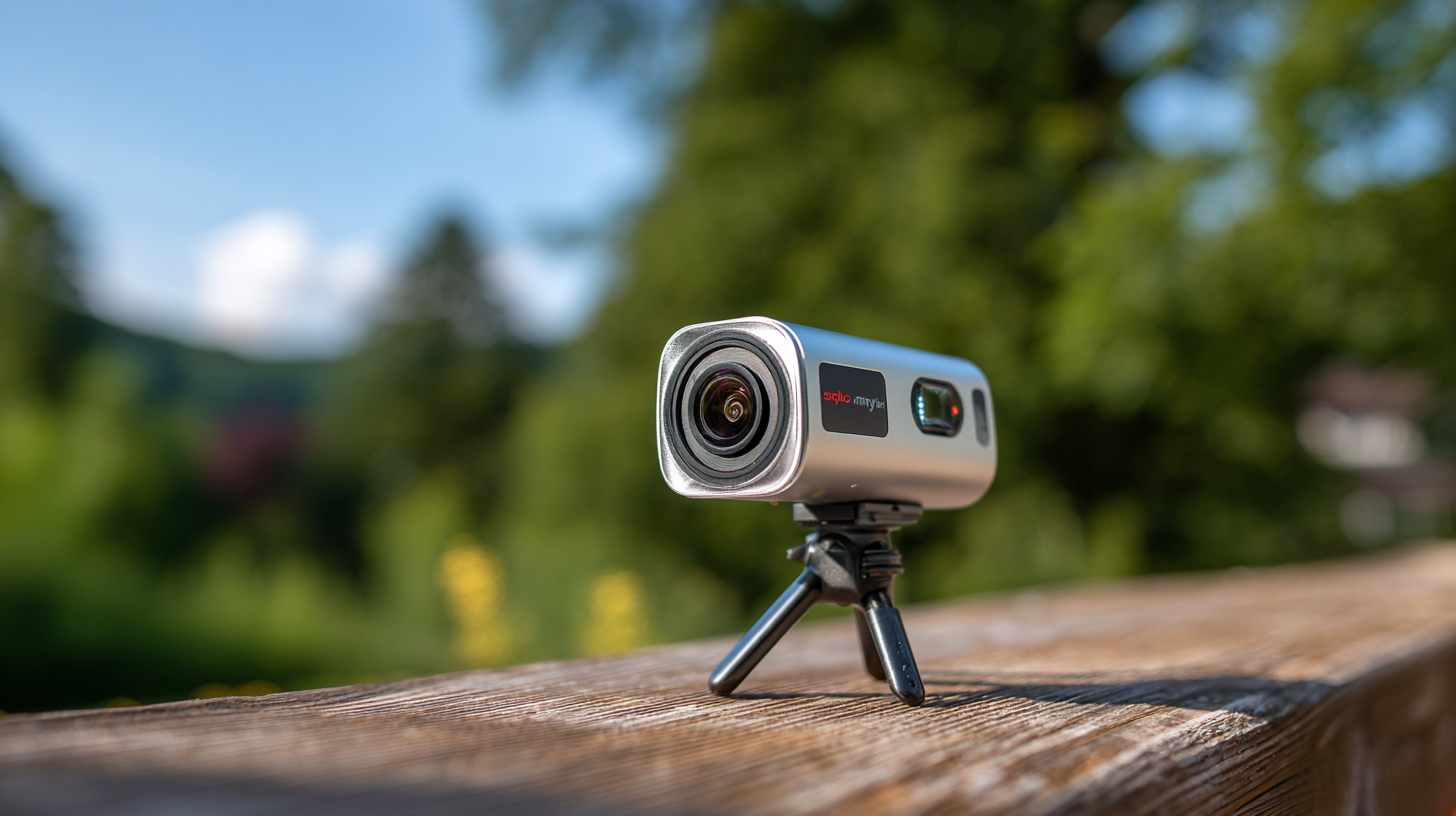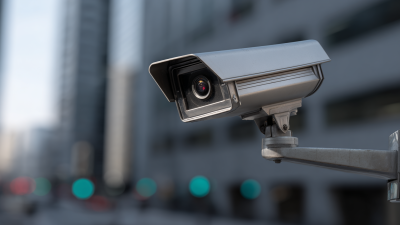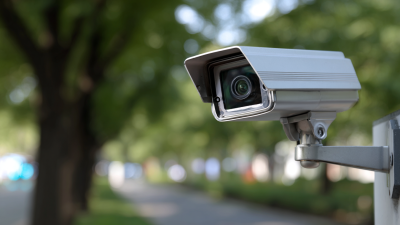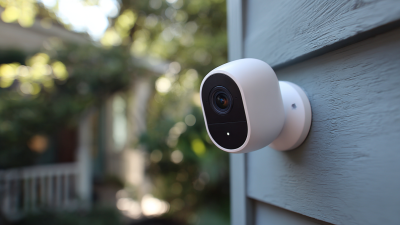
In recent years, wildlife photography has experienced a transformative shift, largely propelled by advancements in technology. Among these developments, the emergence of the solar camera with zoom capability has garnered significant attention for its potential to revolutionize how photographers capture elusive wildlife. Expert in wildlife technology, Dr. Elena Carter, emphasizes this innovation: "The solar camera with zoom not only enhances the photographer's ability to capture incredible moments from a distance but also supports sustainable practices by utilizing renewable energy."
This exciting integration of solar power and advanced zoom features opens new avenues for capturing stunning images without interfering with natural habitats. As photographers venture into the field, the solar camera with zoom empowers them to document behaviors and interactions that were previously challenging to observe. The enhanced capabilities ensure that wildlife enthusiasts can preserve the beauty of nature while promoting conservation efforts through responsible photography.
As we explore the future of wildlife photography, it becomes clear that the solar camera with zoom is more than just a tool; it represents a shift towards environmentally conscious practices that could redefine our approach to capturing and appreciating the natural world. The following sections will delve into the top ten impacts of this innovative technology, highlighting its significance for both photographers and the ecosystems they aim to protect.

Understanding solar camera technology is transforming the landscape of wildlife photography. These innovative devices leverage solar power, allowing for prolonged usage without the constant worry of battery depletion. This feature is particularly beneficial for wildlife photographers who often find themselves in remote locations for extended periods. By harnessing the sun’s energy, solar cameras ensure that photographers can capture those fleeting moments in nature without interruption, enhancing their chances of documenting rare wildlife behaviors.
In addition to energy efficiency, solar cameras come equipped with advanced zoom capabilities. This allows photographers to maintain a safe distance while still capturing high-resolution images of animals in their natural habitats. The combination of solar technology and enhanced zoom features empowers wildlife enthusiasts to explore new angles and perspectives. Photographers can now focus on behavior and interactions without causing disturbance, promoting a more ethical approach to wildlife observation while still achieving stunning visual results.
| Feature | Description | Benefits for Wildlife Photography | Example Use Case |
|---|---|---|---|
| Solar Power | Utilizes solar energy to charge | Environmentally friendly, reduces dependence on batteries | Ideal for remote locations without electricity access |
| Zoom Capability | Optical zooming features | Allows capturing distant wildlife without disturbance | Observing shy animal species from a distance |
| Motion Detection | Triggers camera when movement is detected | Captures candid moments without requiring manual operation | Tracking animal behavior in natural habitat |
| High Resolution | High-quality image capture | Ensures detailed images necessary for wildlife documentation | Research and publication of wildlife studies |
| Weather Resistance | Built to withstand harsh environmental conditions | Reliable operation in varying weather | Capturing images during storms or bad weather |
When considering the right zoom level for wildlife photography, several factors come into play. The first is the distance between the photographer and the subject. Different species exhibit varying reactions to human presence; thus, it's crucial to choose a zoom level that allows for clear, detailed images without disturbing the wildlife. A lens with a greater zoom capability enables photographers to capture shots from afar, increasing the likelihood of observing natural behaviors without interference.

Another important consideration is lighting conditions. Wildlife photographers often find themselves in environments with fluctuating light, such as dense forests or open plains. A lens with a higher zoom power may require a larger aperture to let in sufficient light, which can improve image quality in darker settings. Additionally, photographers should account for image stabilization features, as higher zoom levels can exacerbate camera shake, leading to blurry images. Balancing these technical aspects will empower photographers to make informed decisions when capturing the beauty of wildlife through their solar cameras.
When utilizing solar cameras equipped with zoom capabilities in wildlife photography, mastering various lighting conditions is essential for capturing stunning images. Different times of the day present unique challenges, from the harsh midday sun to the softer hues of dawn and dusk. In bright sunlight, a polarizing filter can help reduce glare and enhance color saturation, allowing photographers to capture wildlife in rich detail. It is important to adjust the exposure settings to prevent washed-out highlights and loss of detail in bright scenes.
Conversely, low-light conditions, such as early morning or late evening, require different techniques. Solar cameras can be invaluable here, as their energy-efficient design allows for longer shooting sessions without battery anxiety. Utilizing a higher ISO setting can enhance sensitivity to light, but photographers must balance this with the potential for increased noise in the image. Additionally, using the zoom feature wisely at dusk can help isolate subjects amid the fading light, capturing their natural behavior without intruding on their habitat. Understanding these techniques allows wildlife photographers to adapt effectively to various lighting scenarios, maximizing the potential of solar cameras for breathtaking wildlife imagery.
As wildlife photography continues to evolve with advancements in technology, the ethical considerations of using innovative tools like solar cameras with zoom capabilities come to the forefront. These cameras not only enhance the quality and clarity of images but also present a dilemma regarding wildlife disturbance. According to a report by the International Journal of Wildlife Photography, over 70% of wildlife photographers believe that technology should be used responsibly to minimize human impact on animal behavior. This belief is crucial as capturing stunning close-ups without causing stress to the subjects is paramount.
The delicate balance between maximizing camera capabilities and respecting wildlife can be challenging. When photographing in sensitive environments—such as during the winter months when animals may be more vulnerable—photographers must adopt careful strategies. Techniques like maintaining a respectful distance and using zoom functionalities allow for breathtaking shots while keeping animals undisturbed. A study highlights that animals subjected to close human interactions exhibit significant stress indicators, emphasizing the need for ethical practices in wildlife photography. By integrating technology thoughtfully, photographers can showcase the beauty of wildlife while prioritizing their well-being.
Post-processing is a vital part of wildlife photography, especially for those utilizing solar cameras equipped with zoom features. These advanced cameras allow photographers to capture stunning images of wildlife from a distance, but the true magic often happens in post-processing. Techniques such as adjusting exposure and color balance can dramatically enhance the details and vibrancy of each shot. Using software tools, photographers can also sharpen the images, highlight important features of the wildlife, and even remove any unwanted distractions from the background, making the subject stand out.
Moreover, the unique strengths of solar cameras can be leveraged in post-processing to maximize their capabilities. These cameras often capture a broader dynamic range, allowing for better manipulation of highlights and shadows during editing. Photographers should also take advantage of software that helps with noise reduction, particularly in low-light situations which are common in wildlife settings. By refining their photos in this way, photographers can elevate their wildlife images to high-quality works of art, bringing the beauty of nature even closer to home.







